A First Halloween After Prison
by Sabine Heinlein
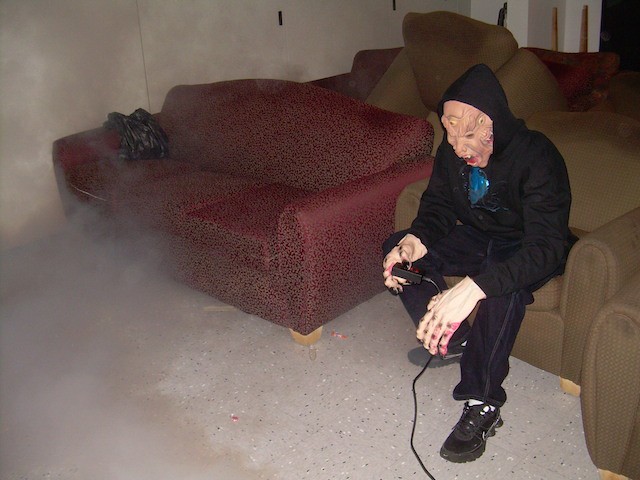
Each year, “The Castle” — a West Harlem halfway house whose nickname comes from its miniature lookout towers and its gray crenellations — puts on a Halloween celebration for its residents and the general public. As a huge fan of Halloween, which is not generally observed in my native Germany, I was eager to be there when Angel, one of 60 or so halfway house residents, celebrated it for the first time in more than three decades.
I had been reporting on Angel’s life since shortly after his release from prison in March of 2007. In 1978, shortly after turning 18, Angel had murdered a 16-year-old girl. He was 47 when he was finally released. While he and his fellow halfway house residents were eager to make up for all the things they had missed in prison, their struggles on the outside were always palpable.
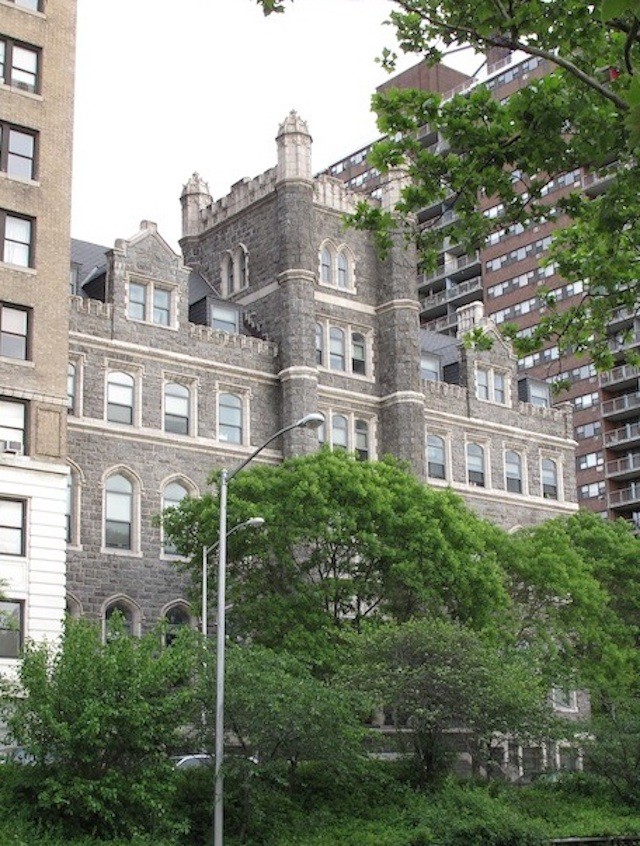
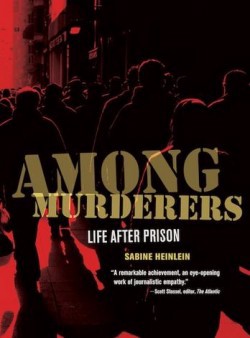
This text is adapted from Among Murderers: Life after Prison, by Sabine Heinlein, published by the University of California Press. Among Murderers: Life After Prison is available where books are purveyed.
• Your local bookstore • Amazon • Powell’s • Barnes & Noble • McNally Jackson
On Halloween night, a long line of children snaked around the corner from the Castle. Men set up the DJ booth and created the path of horror through the conference room. This year’s theme was “The Obstacle Course.” Kids were invited to climb through a narrow, black aisle that curved through the building’s ground floor. They would be frightened by radio-controlled mice and rats, flying spiders and ex-cons hiding in dark window frames. A “mental patient” on the loose and a “doctor” cutting off fake limbs would roam the old chambers, accompanied by recordings of thunder, screaming and clattering chains. A more benign aisle was reserved for pregnant women.
Among the most celebrated attractions was an old microwave oven with its bottom cut out. It stood on a folding table, covering a circular hole. At first I thought someone had just stuck a bloody mask inside the microwave. Then I saw patches of dark skin and black, shiny eyes. His body obscured by a large trash bag, the man behind the mask knelt on the floor. He rattled and moaned at the people walking by.
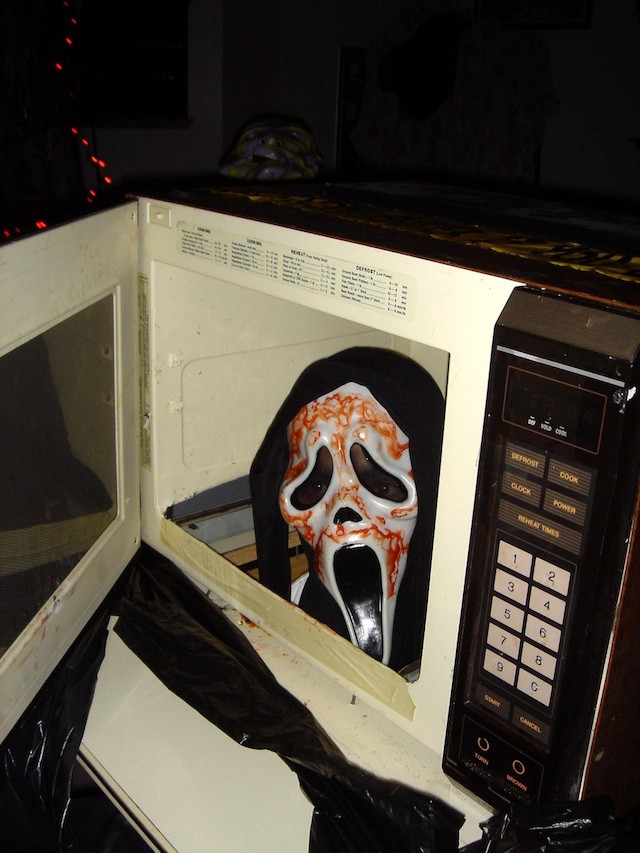
Because I considered this event part work and part play, I invited my friend Franzi along. A performance artist who enjoys dressing up and whose work encourages people to interact, Franzi likes people and people like her.
Franzi dressed in a purple and orange ninja costume. She wore a necklace made of heavy wooden balls and, inexplicably, tied a thick rope around her forehead. I wore the usual costume I dig out for any type of masked ball: black leggings, long sweater, teased hair, white makeup, black eye shadow. It’s a frightening version of myself. I suspect it’s also how my mother used to see me as a teenager — sickly, rebellious, with unkempt hair and perpetually dressed in black.
Franzi brought a decomposed leg (plastic) and arm (plastic). I wondered how the Castle residents separated the idea of murder from real murder. Many of the costumes screamed murder. There were weapons — guns, knives, swords — and a lot of fake blood. Is real murder so detached from its sham version that murderers can dress up as murderers without being reminded of their crime?
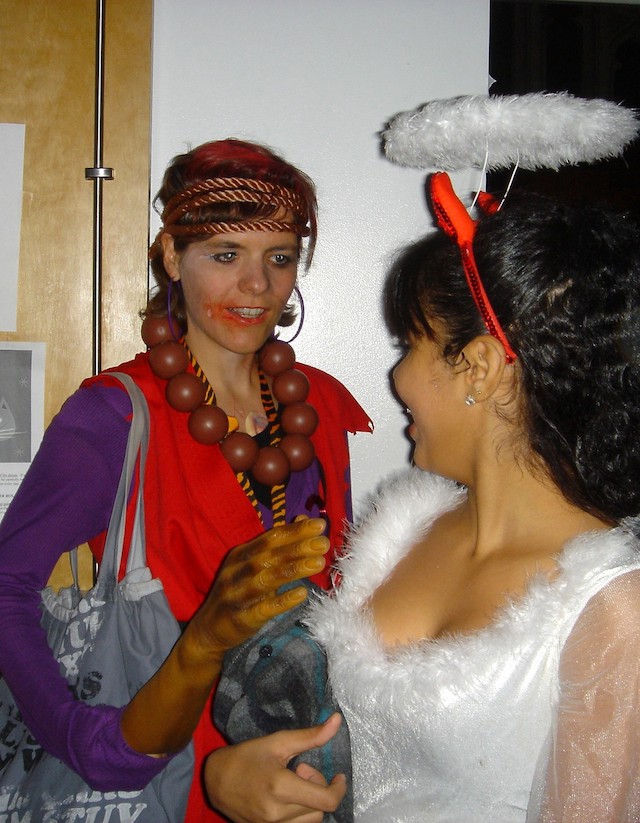
“We are not scaring the children to the point where they run away and wet their pants,” said Tom Pumo, director of Food Services and Event Planning at The Castle, a few days before the event. “The kids in this neighborhood are tough.”
He emphasized the therapeutic quality of the haunted house; the ex-prisoners took it seriously. Pumo hoped the party would cheer them up.
Franzi was as cheerful as the children around her. She kept extending her rotten arm at small children, her real arm concealed inside her shirt. When the children reached out to shake her plastic hand, she dropped the arm, said, “Oops!” and giggled. Some children laughed, others screamed. I hid behind my camera. Eventually Franzi misplaced her rotten limbs. Or did someone take them? The last time she saw them, they were under a table in the cafeteria. We searched frantically.
I wondered what kind of parents let their children go to a house full of murderers, robbers, drug addicts and dealers. For the Fortune Society, the organization responsible for the Castle, the event was important proof that its halfway house had found acceptance in the neighborhood. The Castle’s residents had been fully rehabilitated — that’s why parents would allow their children to attend the event. I noticed most children were accompanied by older siblings. Many were with their friends. Some were by themselves. Among the girls were countless princesses and nurses, in part representing what they would like to be when they grow up, in part representing what they might end up as. The boys dressed up as wrestlers, superheroes and vampires. There were also a few blood-drenched murderers among them. A tiny clown strapped down in his stroller looked like he was close to tears. A teenage mother with her two boys was dressed as a pregnant nun; a white rubber ball shone through her black habit.
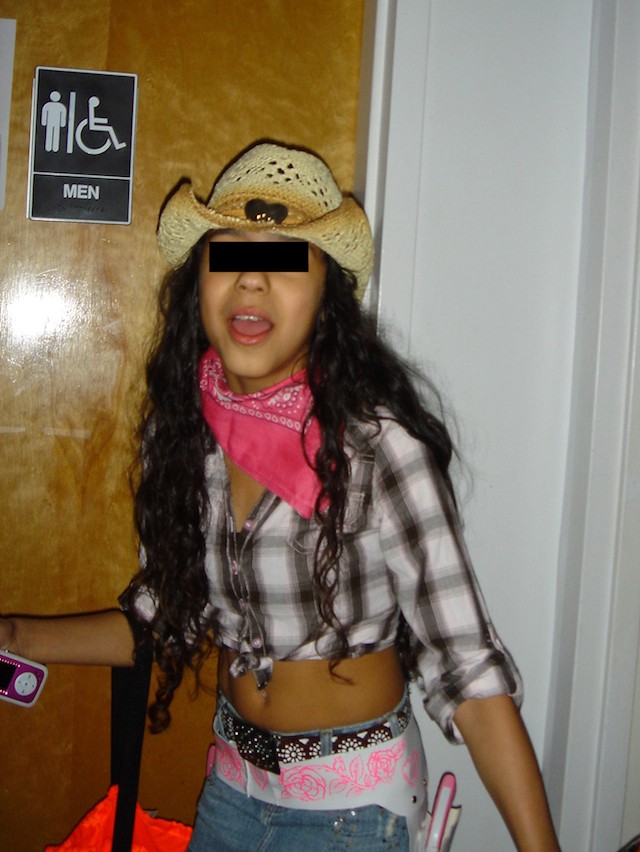
One girl, there by herself, stood out. She was dressed as a cowgirl. No older than thirteen, she wore a form-fitting plaid shirt tied in a knot three inches above her belly button. She wore a short denim skirt that barely covered her bony bottom. Her curly black hair was draped over her tiny breasts and touched the exposed caramel skin of her waist, where a gun holster held a pink and white plastic gun. The gun matched the iPod in her right hand.
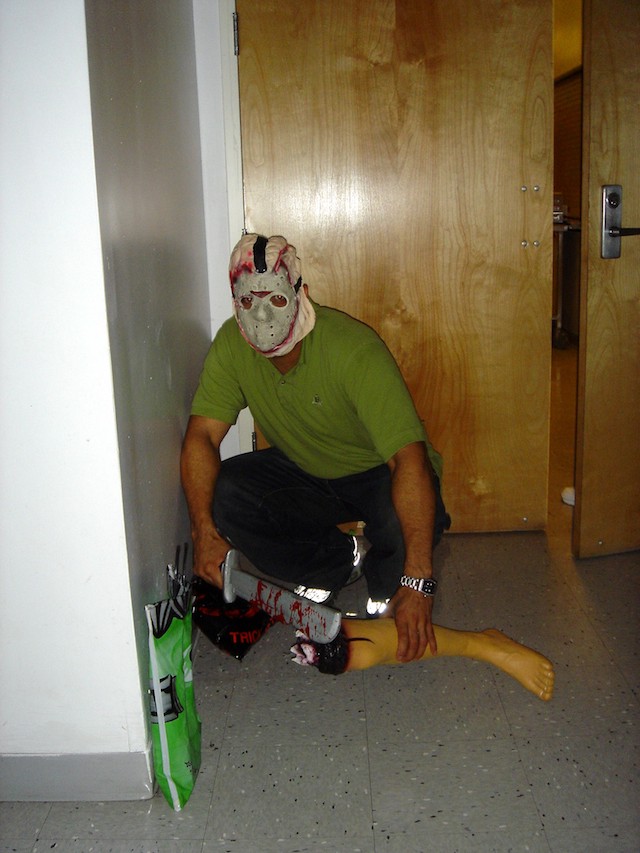
Angel did not dress up. He simply put on his mirrored sunglasses, folded his hands behind his back, and remained motionless in a dark corner. I tried to talk to him but couldn’t penetrate his mirrored barrier. His silence and forbidding glasses made me uncomfortable. Later, Franzi said that she, too, felt uncomfortable in his presence. “Everybody except Angel tried to be cheerful and play along,” she said.
I wondered why Angel acted that way. Did all the blood and weapons seem a bit too real? Angel was cheerful and charming only when he had an audience. He felt most comfortable when he was the center of attention. But the haunted house was a team effort. Keeping everybody happy and making one another laugh was its primary purpose. We all did our best.
At first I didn’t recognize Aazim, the Castle’s cook. His black cowboy hat transitioned into a black spandex mask. His milky eyes were obscured by elliptical black sunglasses. The kitchen lights reflected in his glasses like a cold star. Aazim’s mask merged into a black t-shirt with the image of an angry silver skull that sprawled across his big stomach. Usually a chatterbox, Aazim was silent. He just stood there — blind, mute, scary. He looked, I thought, like a murderer. I had never asked Aazim about his crime, but judging from the length of his sentence — twenty or twenty-five years — it must have been serious.
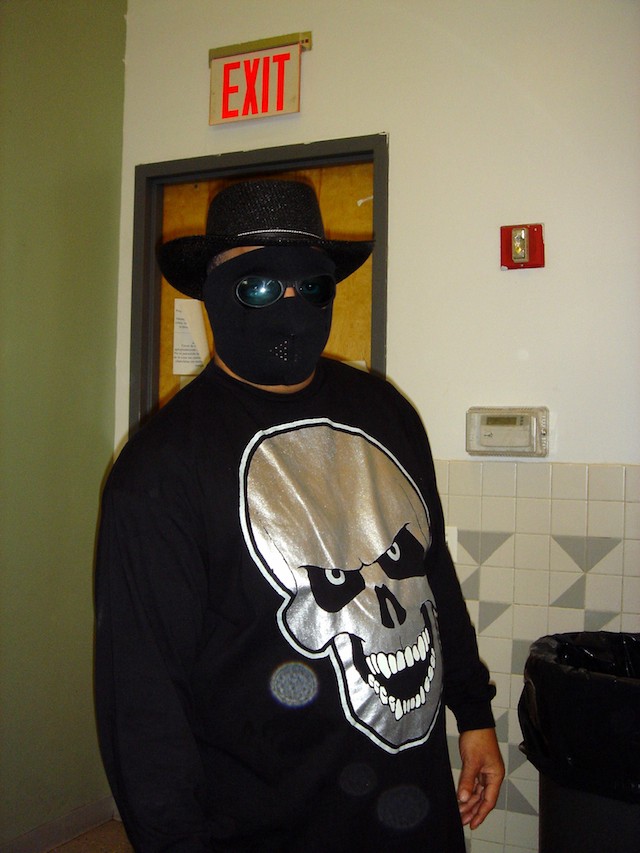
Franzi suddenly disappeared. A little girl dressed as a princess had been so frightened by the head in the microwave that she started crying. No one knew where her parents or siblings were, so Franzi took the girl by the hand and led her outside, away from sword-swinging murderers and masked men. She tried to calm the girl, who sobbed desperately.
“Dressed as a freak, it was hard to represent a more comforting world,” Franzi said later. “As I was trying to comfort the little girl, I wished I had been Cinderella — and I wished I had left the rotten arm and leg at home.”
That pretty much captured the night’s dilemma. This one day of the year, for a few hours, the men had the opportunity to escape their pariah status and cross over into the mainstream — and the mainstream could enter their world. Yet the event only resulted in a grotesque parody of their situation. The scary man frightened a girl. She never saw his real face.
Sabine Heinlein is a nonfiction writer based in New York, and the author of Among Murderers: Life After Prison. All photos by Sabine Heinlein, except the first, by Franziska Lamprecht.
